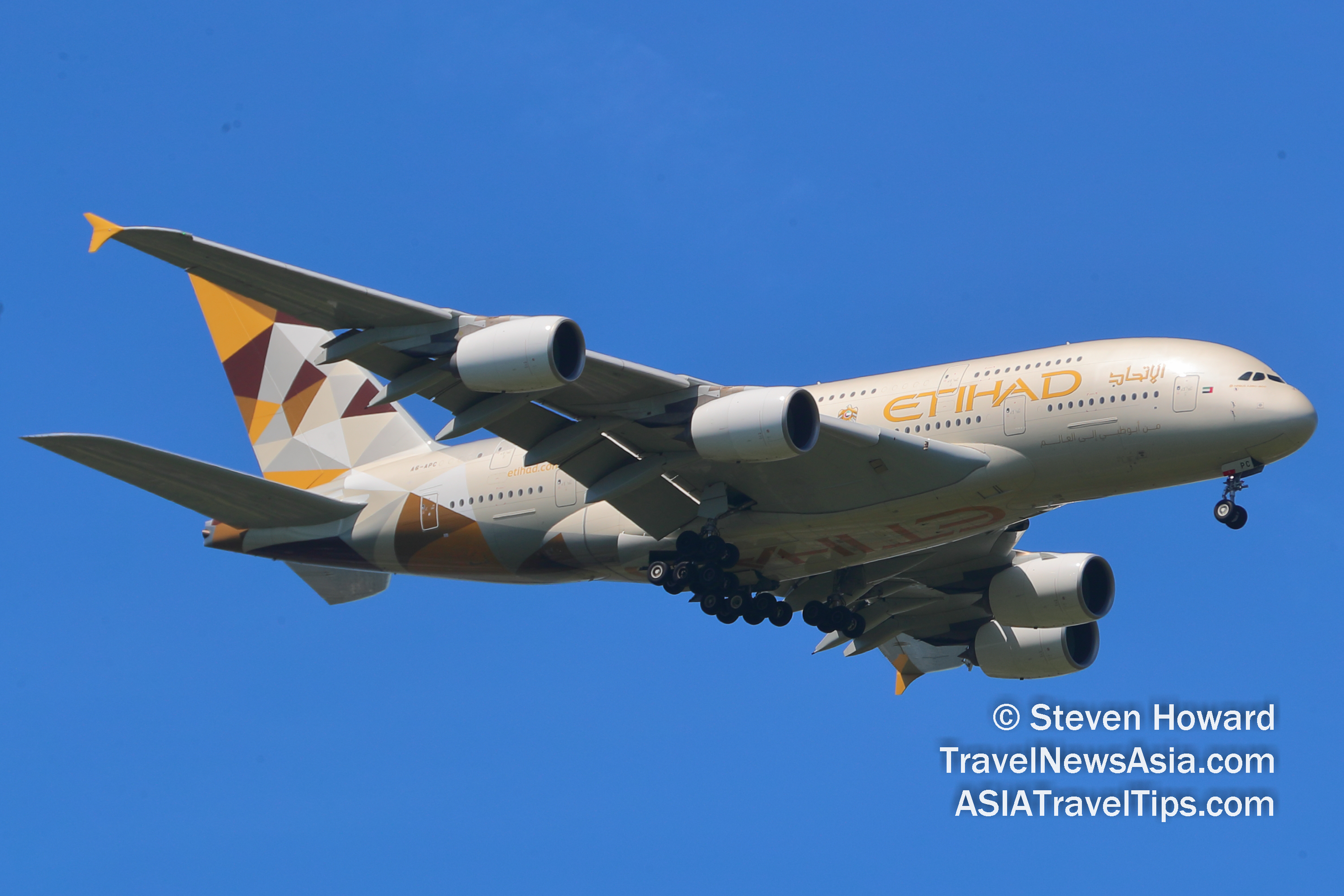|
Etihad Airways' operating and financial
results for H1 2021 show a progressive recovery
across its business despite a slower than expected return to
global air travel.
The airline carried one million
passengers in H1 2021, with an average seat load factor of 24.9%.
That represents an average 10% month-on-month growth in passenger
volumes since Etihad restarted passenger operations in July 2020.
Network capacity in H1 2021 came in
at 16.4 billion ASKs and has grown steadily since the start of
the year, with the airline operating almost 3,500 flights a month
to 67 passenger and cargo destinations by the end of June 2021.
Since the beginning of 2021, Etihad has launched or restarted operations to 10 destinations, including the historic launch of
scheduled services to Tel Aviv in April 2021.

As a
result of new variants of the coronavirus affecting key travel
markets in the Indian Sub-Continent and Europe, passenger revenue
came in at US$0.3 billion, down by 68% year-on-year from US$1.0
billion.
The dip in passenger revenue was offset by
strong performance in cargo operations, with a 44% year-on-year
increase in freight carried in H1 2021 (365,500 tonnes) and a 56%
year-on-year increase in revenue (US$0.8 billion).
Tony Douglas, Group Chief Executive Officer, said, “Every day,
Etihad Airways is making up for lost ground. Despite the curveball
of the Delta variant disrupting the global recovery in air travel,
we have continued to ramp up operations and are today in a much
better place than this time in 2020. As soon as destinations are
added to the Abu Dhabi green list or UAE travel corridors, we are
seeing a three to six-fold jump in bookings in some cases, showing there is a tidal wave of demand waiting to be unleashed. We are
ready to welcome more guests on board to experience why Etihad is
second to none when it comes to ensuring passenger wellbeing.”
Throughout the first half of 2021, Etihad retained a
singular focus on cost control, decreasing operating costs by 27%
year-on-year from US$1.9 billion to US$1.4 billion, supported by
reduced capacity and volume-related expenses.
Fixed overhead costs
saw a significant improvement, reducing by 22% to US$0.3 billion,
while finance costs reduced by 22% owing to an ongoing balance
sheet deleveraging. As a result, the airline managed to rebuild
its liquidity position to pre-pandemic levels.
Overall, Etihad recorded a core operating loss of US$0.4 billion
for H1 2021 (half the loss of US$0.8 billion in H1 2020), with
EBITDA turning to a positive US$0.1 billion from a negative US$
0.1 billion in the same period of 2020.
Adam Boukadida,
Chief Financial Officer, said, “While market demand has been
slower to recover than anticipated, our record cargo performance
has continued to buoy the business. At the same time, we have
continued to strengthen underlying fundamentals to place Etihad in
a better position to maximise the value of passenger revenue as
our volumes return. Our rock-solid credit rating has remained
unwavering throughout the pandemic and was once again reaffirmed
at ‘A with a stable outlook’ by Fitch in April 2021, serving as a
clear sign of the long-term financial viability of our business.
While the pandemic still poses challenges, Etihad is on the path
to becoming a sustainable and profitable business.”
Published on TravelNewsAsia.com at:
https://www.travelnewsasia.com/news21/128-EtihadAirways.shtml
See latest
Travel Industry News,
Video
Interviews,
Podcasts
and other
news regarding:
Etihad.
|
Headlines: |
|
|
